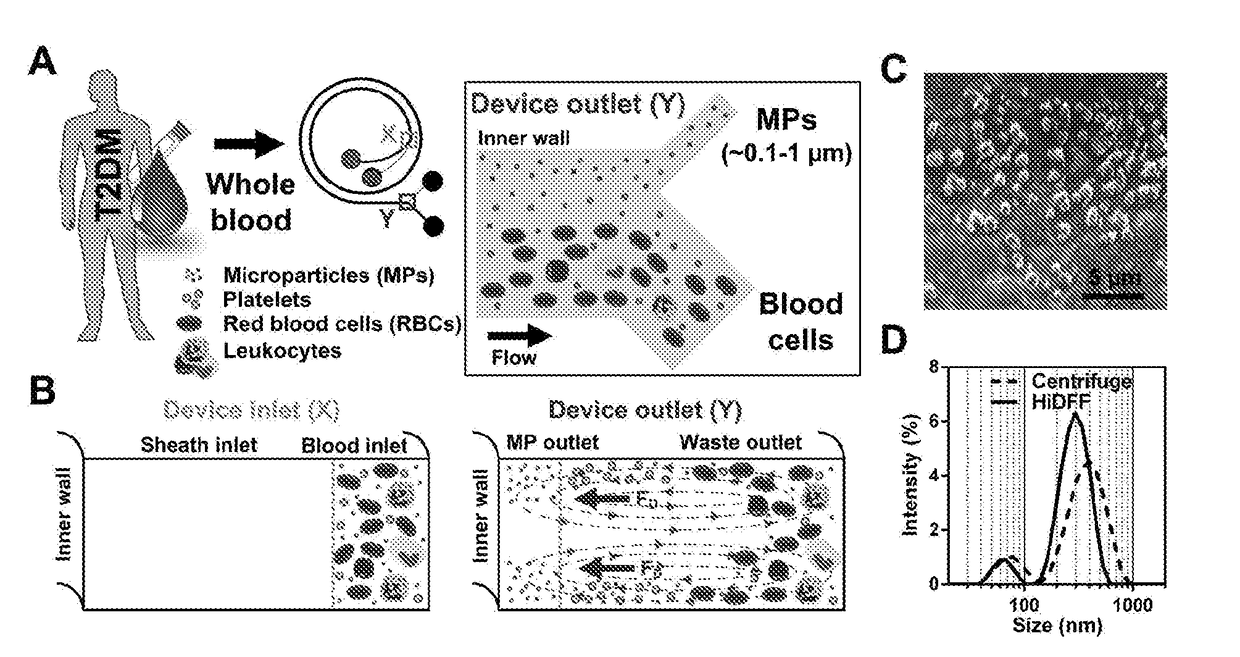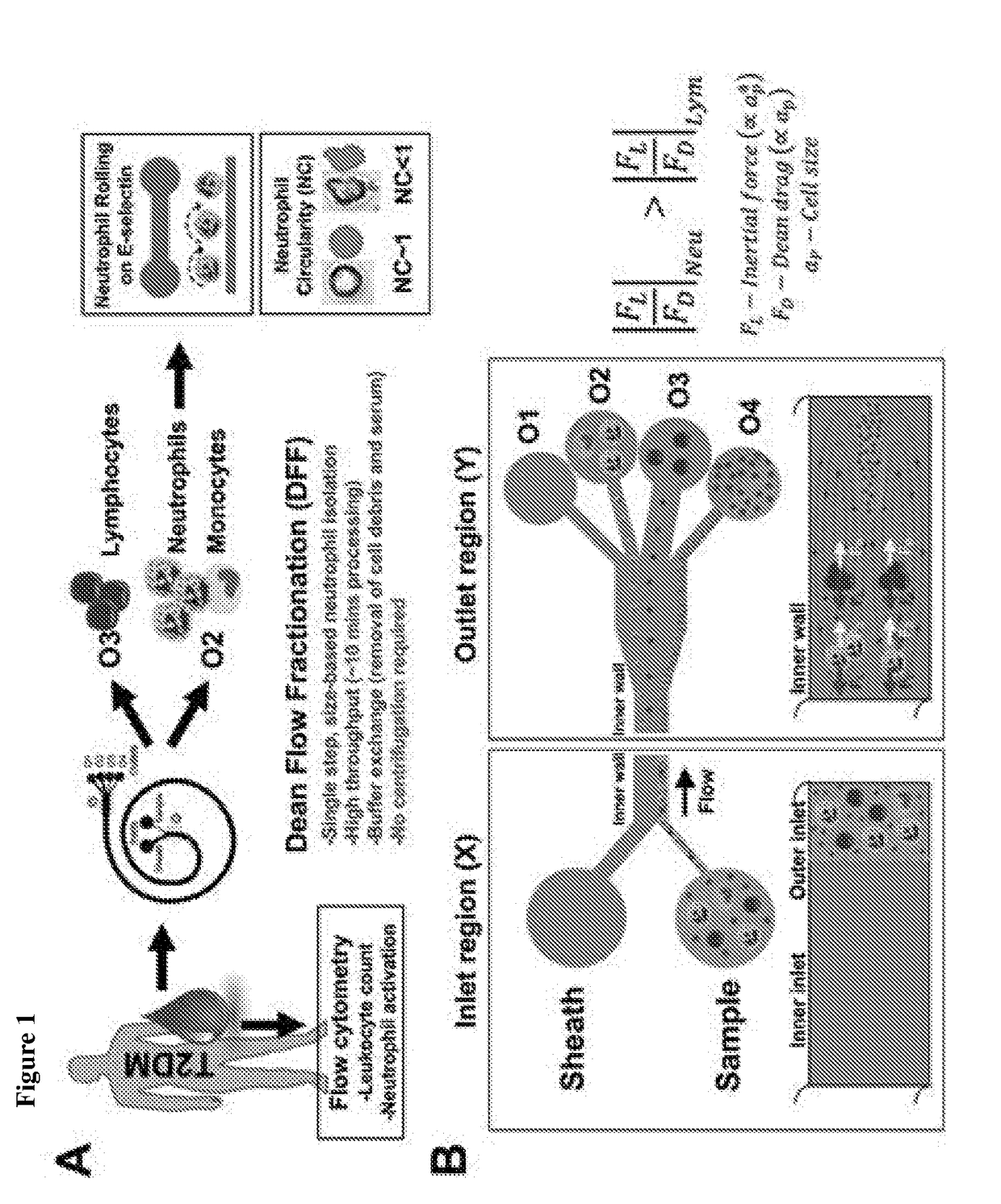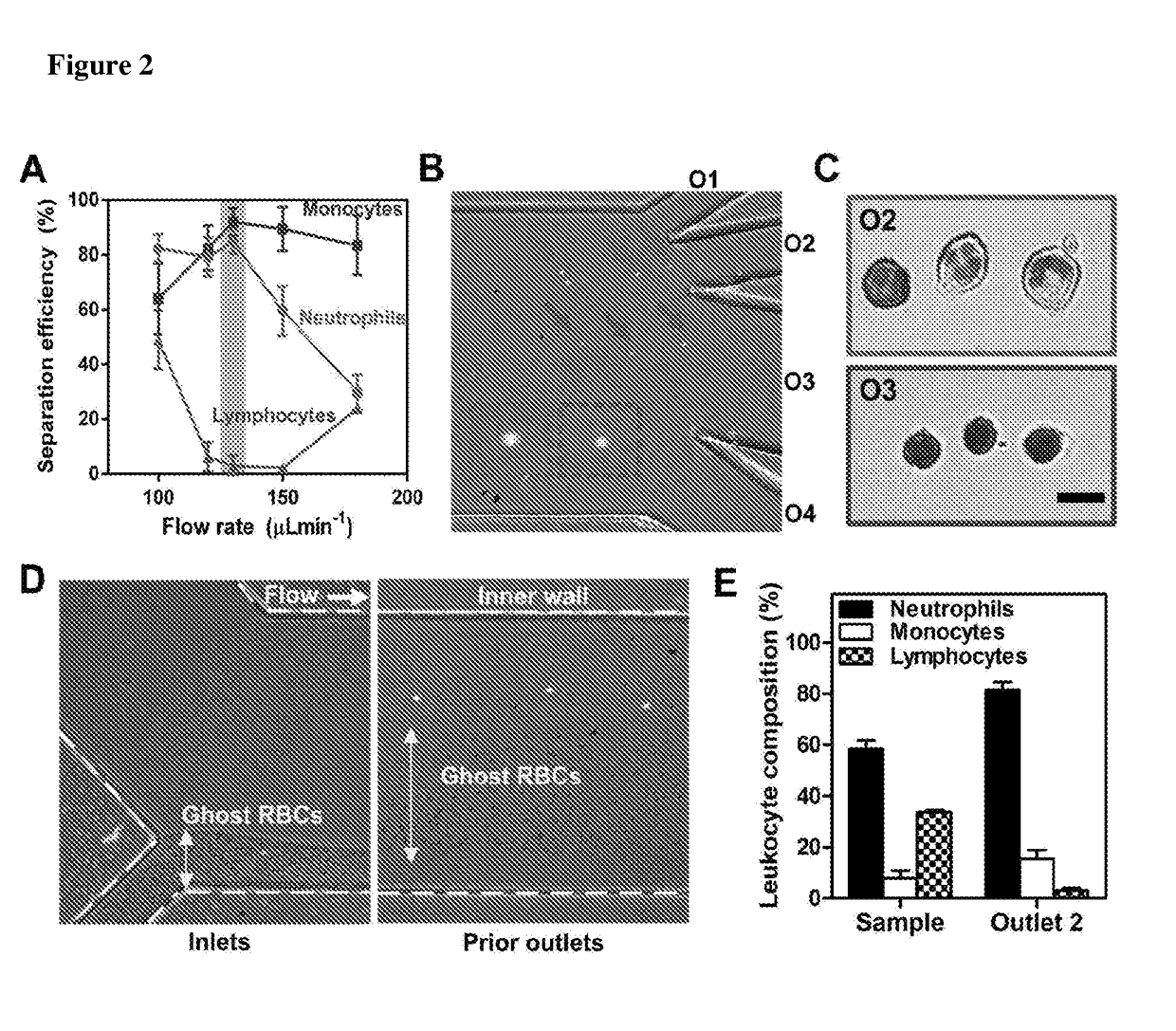Leukocyte and microparticles fractionation using microfluidics
a technology of microfluidics and leukocytes, applied in the field of biochemistry, can solve the problems of inability to efficiently and passively sort the particles, lack of suitable isolation and assay methods, and increasing difficulties
- Summary
- Abstract
- Description
- Claims
- Application Information
AI Technical Summary
Benefits of technology
Problems solved by technology
Method used
Image
Examples
example 1
dic Neutrophil Purification and Phenotyping in Diabetes Mellitus
[0124]A microfluidic cell sorting technology termed as Dean Flow Fractionation (DFF) has been developed for size-based separation of diseased cells including circulating tumor cells (CTCs) [Hou, H. W. et al. Sci. Rep. 3 (2013)] and microorganisms [Hou, H. W. et al. Lab Chip 15, 2297-2307 (2015)] from whole blood. Here, it was tested if the subtle cell size difference between leukocyte subtypes may be sufficient for separation by a 4-outlet DFF spiral device to purify neutrophils from lysed whole blood in a single-step manner (FIG. 1).
[0125]The DFF spiral device was fabricated in polydimethylsiloxane (PDMS) and consists of a two-inlet, four-outlet spiral microchannel (500 μm (w)×115 μm (h)) with a total length of ˜10 cm. The channel height was fixed at 115 μm so that only the larger leukocytes (˜8 to 12 μm, ap / h >0.07, where ap is particle size) can experience inertial focusing and equilibrate near the inner wall. Near t...
example 2
n of Small Micro / Nanoparticles Using Microfluidics Using a 2-Outlet Device
[0132]The microfluidic devices are fabricated in polydimethylsiloxane (PDMS) using standard soft lithography techniques. The developed microdevice consists of a 2-inlet, 2-outlet spiral microchannel (300 μm (w)×60 μm (h)) with a radius of 0.5-0.6 cm and a total length of 6.5 cm. The sample (50 μm wide) and sheath (250 μm wide) inlets are fixed at the outer and inner wall of the channel, respectively. For outlet bifurcation, the smaller outlet channel at channel inner wall is designed to collect smaller particles (outlet 1) while larger particles are collected at the larger outlet (outlet 2).
[0133]During device operation, bead sample is pumped into the outer inlet while sheath fluid (1×PBS) is pumped through the inner inlet at a higher flow rate (1:5) to confine the sample stream near the outer wall. To ensure the absence of inertial focusing in our device, beads of smaller diameters (50 nm, 1 μm, 2 μm and 3 μm...
example 3
Sorting
[0137]Based on the focusing mechanism in a 2-outlet spiral device, separation and enrichment of bacteria species was performed based on their cell size. As proof of concept, sample solution containing mixture of E. coli (rod shaped, ˜2-4 μm long, 1 μm wide) and S. aureus (circular, ˜1 μm diameter) was pumped into the device. The smaller S. aureus were sorted into outlet 1 while E. coli were recovered mostly in outlet 2 (FIG. 14). Interestingly, size fractionation of E. coli was observed as smaller E. coli (mean±SD; 2.03±0.46 μm) and larger E. coli (2.85±0.75 μm) were sorted into outlet 1 and 2, respectively (FIG. 15). This further illustrates the superior separation resolution of the present technology for bacterial sorting or diagnostics.
PUM
 Login to View More
Login to View More Abstract
Description
Claims
Application Information
 Login to View More
Login to View More - R&D
- Intellectual Property
- Life Sciences
- Materials
- Tech Scout
- Unparalleled Data Quality
- Higher Quality Content
- 60% Fewer Hallucinations
Browse by: Latest US Patents, China's latest patents, Technical Efficacy Thesaurus, Application Domain, Technology Topic, Popular Technical Reports.
© 2025 PatSnap. All rights reserved.Legal|Privacy policy|Modern Slavery Act Transparency Statement|Sitemap|About US| Contact US: help@patsnap.com



